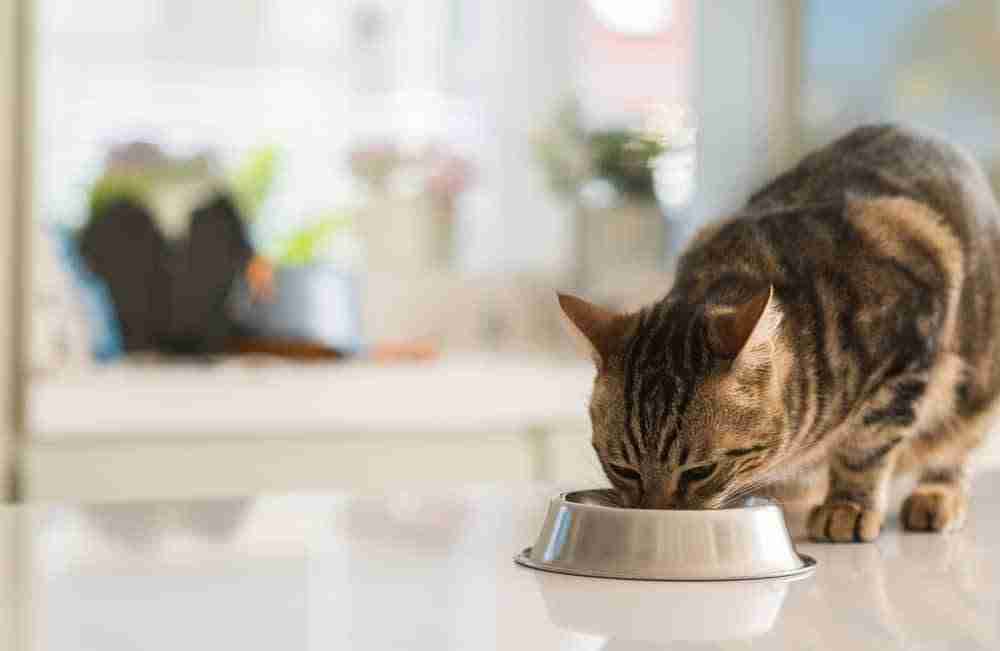Wet or dry cat food, which should you feed your cat with? Should you use both? Are there any good reasons why one is better than the other? Well, no – both types of food can adequately meet all your cat’s nutritional needs. However, each type of food has different characteristics that can make some types more suitable for your cat and household.
Read on to learn more.
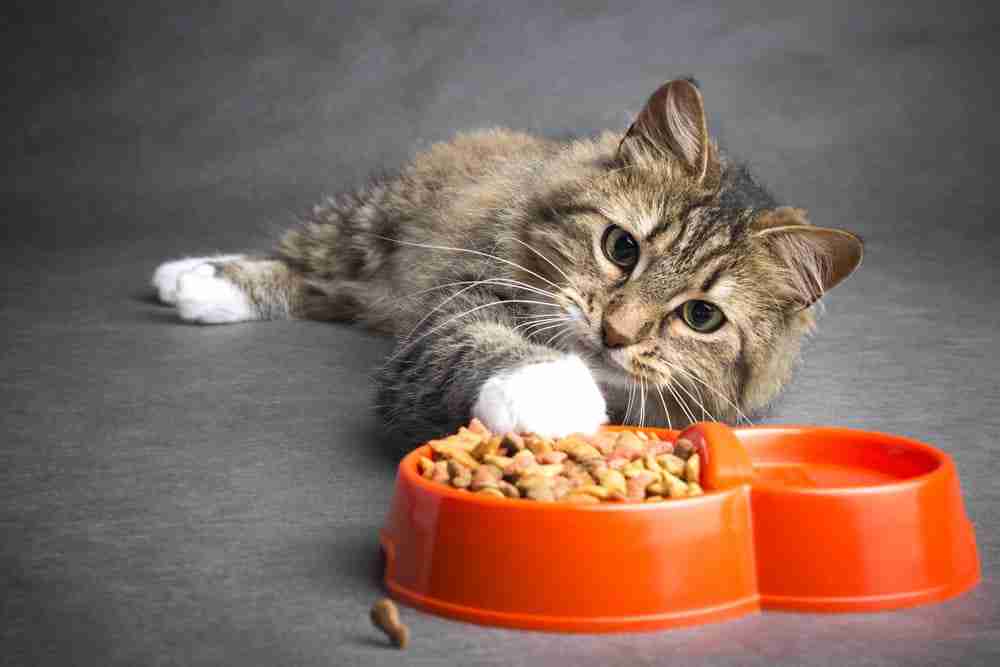
Wet Or Dry Cat Food – What Should You Consider?
Here are some of the main considerations you should make when choosing which cat food is best for your cat and convenient for your lifestyle:
Wet Or Dry Cat Food For Moisture Intake
Cats are notoriously poor drinkers. They don’t really have much of a thirst as they evolved to get most of their moisture requirements from their food. This is fine if your cat is on a wet cat food diet. Most wet cat foods consist of at least 70 to 80% moisture (water) which means that as long as they are eating well they are probably getting the majority of their daily water needs met by their food.
Many older cats develop kidney disease, many male cats can suffer from UTIs brought on by narrow urethra. Additionally, cats with conditions such as hypothyroidism and diabetes can have higher water requirements than healthy cats. In all these instances a wet cat food diet can be beneficial in ensuring your cat gets enough water.
If your cat is not a big drinker and only drinks sporadically from weird places like puddles or dripping faucets or the like then a wet cat food diet can ensure they do not become dehydrated.
Dry cat food, in contrast, has very low levels of moisture to ensure decent shelf life. Unfortunately, this means your cat is going to need to drink well if they are to maintain good levels of hydration or you are going to have to add water to dry cat food. Low water intake in male cats may lead to the formation of bladder stones that can lead to blockages and UTI’s whereas in older cats a low water intake may make kidney issues worse.
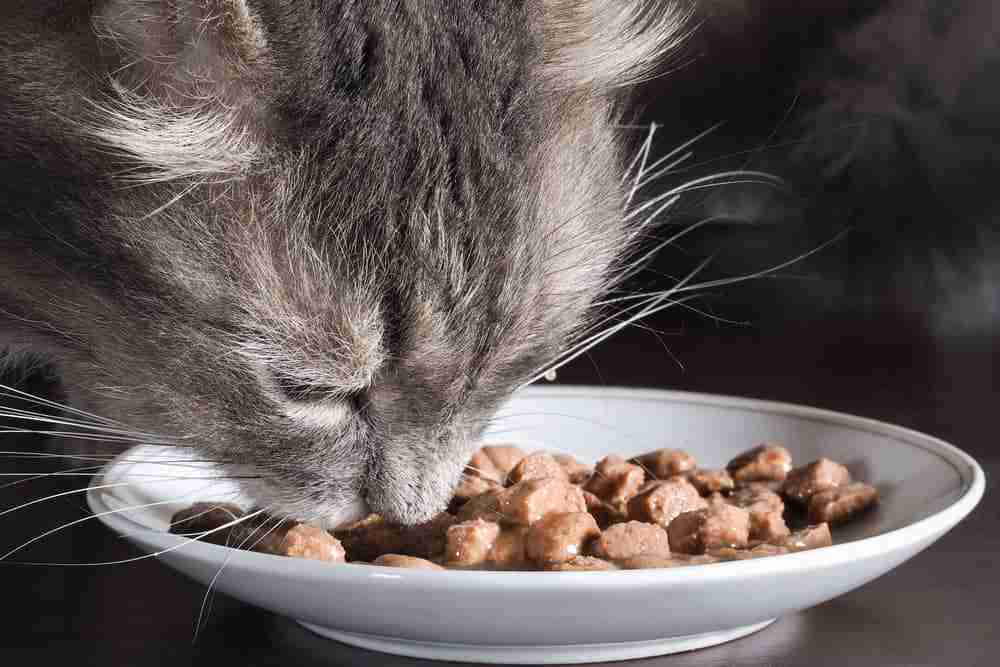
Food Sensitivities
We will preface this by saying that cats that eat wet or dry cat food can develop food sensitivities. Food sensitivities are essentially reactions to ingredients in foods. With food sensitivity or intolerance, the gut will become aggravated and reject the ingredient. This is distinct from a food allergy where the immune system itself will react to the ingredient and the sufferer might endure breathing difficulties or other severe, none gut-related symptoms.
Your cat may develop food sensitivity to specific ingredients on immediate contact or the sensitivity may build up over time. The sensitivity may display through vomiting, extra gas, constipation, or diarrhea. Your cat may also suffer from cramps and bloating but these may be less obvious to all but a veterinarian.
Although cats can develop food sensitivities with either wet or dry cat food the chances are higher that they will develop sensitivities with dry cat food. This is mainly due to the increased use of carbohydrate ingredients in dry food as binders and bulking agents. Cats are not specifically evolved to eat carbohydrates which leads to some conjecture that these ingredients may be the root cause of some of these food sensitivities.
If you find your cat eats kibble and then vomits shortly after then an intolerance may be one of the reasons for the vomiting. Of course, some wet foods can also contain carbohydrates and ingredients known to be difficult for some cats to digest (rich red meats).
Your cat may or may not suffer from intolerances to dry food and indeed, different recipes of dry food from different manufacturers – your mileage will vary, but there is a wide range of cat food for sensitive stomachs available to combat some of these issues if they arise.
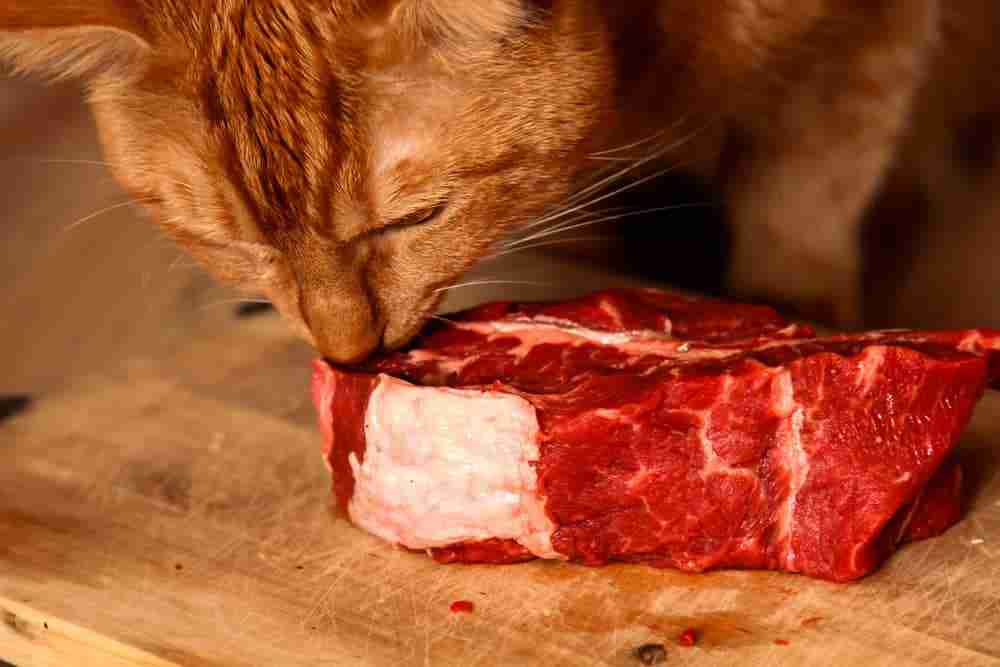
Convenience
Dry cat food is simply more convenient for us cat guardians than wet cat food! In our busy lifestyles, we can simply throw a handful of dry kibble in a bowl and consider it job done as we head off to work or about our daily business.
Wet cat food, on the other hand, requires bowl cleaning, putting out specific portion sizes so food doesn’t go bad in the bowl, and requires wrapping and storage of the remains of open packets in the refrigerator. And late days at the office or on errands won’t do because you have to get back and feed the cat.
And then there is the packaging. Generally, dry food is in single big packets that are easy to transport. Wet food, depending on where you are, maybe either be canned, heavy and take up a lot of space or be packed in individual portions creating lots of waste packets. How you feel about the whole packaging thing will be down to your lifestyle and environmental aspirations!
Flavor & Odor
Wet cat food, by its nature, will have more flavor and odor. This probably won’t matter to you – but to your cat it can be the difference between eating and not.
Many older cats are fussy eaters because their sense of smell and taste deteriorates with age. Other cats can be picky about their food due to texture, temperature, and odor. For all these cats a wet cat food diet is more likely to have them eating well.
Wet cat food can be warmed up and wetted up to get a picky cat-eating. The same can’t be said for dry cat food!
When the scientists have looked at this they have found that meat-based foods that are served at body temperature to your cat – representing an unfortunate wildlife victim – tend to give off sulfur-containing compounds that make the meat content taste more “meaty” compared to ambient or cold wet foods.
However, dry cat foods are still incredibly tasty for many cats – it just depends if you have a picky cat or not! Wet cat food offers more variation if you need to convince your kitty…
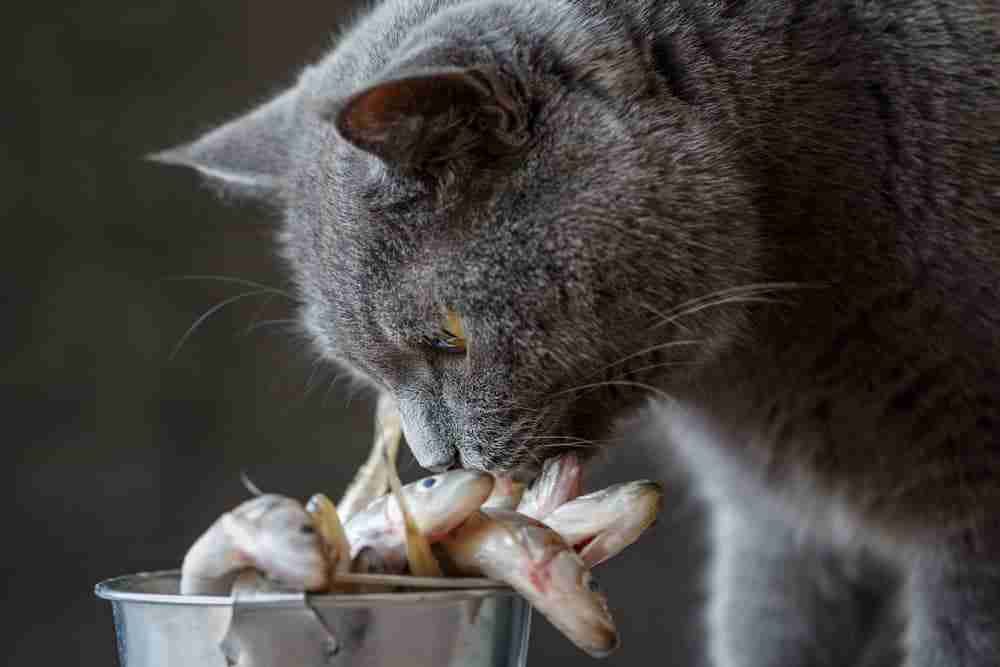
Obesity – Any Difference?
Generally speaking, whether your cat is on a wet or dry diet should not make any difference to their body weight. But there has been a notable increase in overweight and obese cats in recent times, giving rise to an epidemic of feline diabetes in cats.
When this has been studied, it has been found that often cats that are overweight tend to eat a dry food diet. The studies have concluded that the excess weight has nothing to do with the ingredients used, carbohydrates do not really play a role in this obesity epidemic in cats, rather it is portion size that is causing the problem.
Dry cat foods seem to be calorie-dense and portion size can be difficult to judge. Additionally, people tend to free-feed cats on dry food by simply putting handfuls of kibble out for the cat to freely eat through the day – remember convenience? This leads to the cat overeating, and with time, becoming obese and developing diabetes.
Price Concerns
The truth is price concerns are on everyone’s mind right now. And, wet cat food is simply more expensive than dry cat food. Wet cat food, although very high in moisture, tends to contain animal protein which is usually more expensive than plant proteins.
When you have a cat that might live to be eighteen years old it is worth considering the cost over their lifetime. Just make sure you factor in potential health complications and their veterinary costs that could be exacerbated by a dry food diet – for cats with kidney issues, male cats with a tendency to form stones, etc.
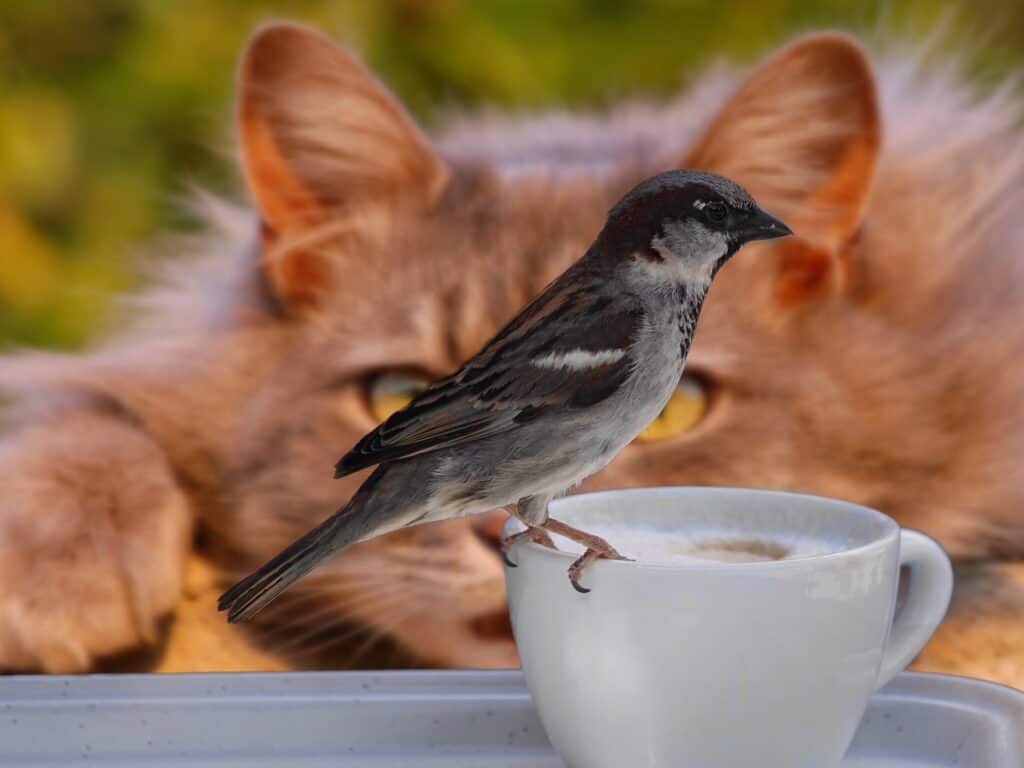
Evolutionary Aspects
Some cat owners believe their cats should be brought up as nature intended or as close to that as possible.
This would mean that their cat is evolved to eat real food as opposed to biscuits. To eat ingredients that cats would look for themselves in the wild – meats, bone, sinew, skin, and offal. Not necessarily corn starch, pea fiber, or the like found in dry cat foods!
This is fine, and the fact is the choice is ours as both potential diets are available. But, a cat in the wild, fending for itself through hunting and scavenging is unlikely to have the same lifespan as a well-loved domestic kitty fed a dry food diet – just saying…
What We Would Feed Our Cat
Cats can eat just dry food, but our choice would be a wet cat food diet for our cat.
I don’t really care too much about the evolutionary aspects of what my cat should eat. If I thought that way, my own diet would be somewhat narrow!
Given money was no object, a wet cat food diet would be attractive because I like the implications for the cat’s health by having a decent amount of their moisture intake coming directly from their food. I also know all too well how frustrating a fussy eater can be and just how much flexibility wet cat food gives you when dealing with such problems.
Sure, wet food is a hassle – more cleaning, being careful about food spoiling and storage, but the peace of mind knowing that they are well watered, eating regular, eating tasty, and probably not getting overweight through my own indulgence and ignorance sit well with me.
